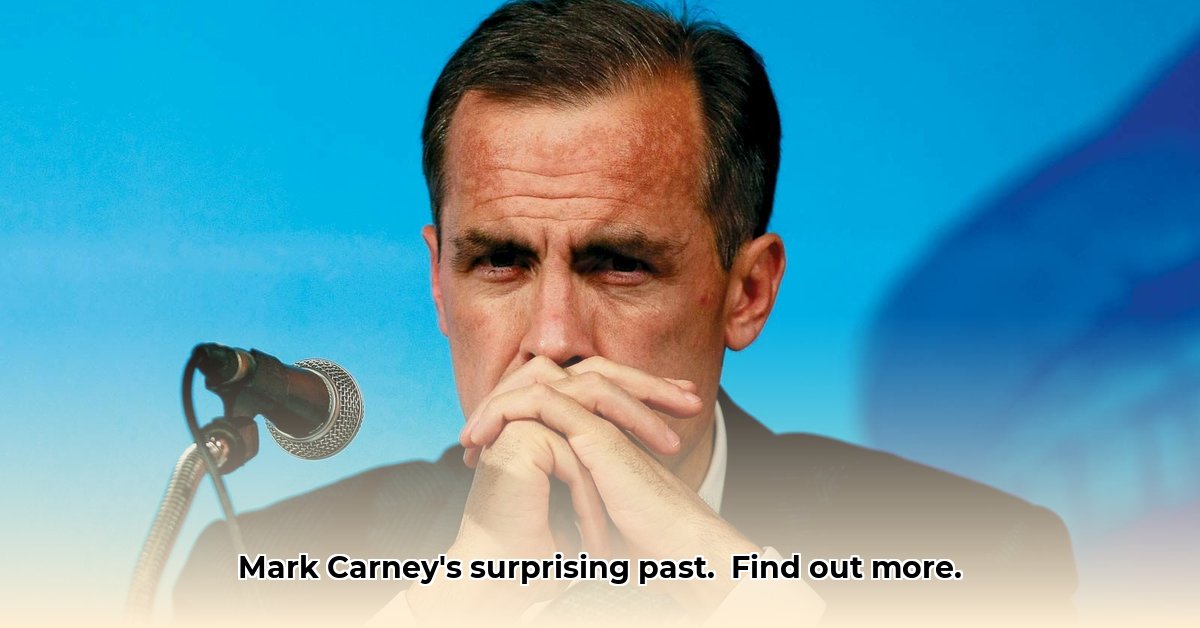
Mark Carney's Early Life in Fort Smith
Mark Carney's journey from a relatively unknown background to becoming a dominant figure in global finance and climate action is a compelling narrative of ambition, intellect, and calculated risk-taking. While specifics regarding his early years in Fort Smith remain scarce, understanding his formative experiences provides crucial context for his unique approach to these critical fields. The question isn't just what he did, but why he did it. His later career decisions and policies, many of them controversial, suggest that his formative years provided a crucial foundation for both his successes and his willingness to challenge conventional wisdom. How did his early environment shape his worldview and prepare him for the complexities of high-stakes global finance? For more on his origins, see Carney's birthplace.
Building Blocks of a Global Leader
The limited information available regarding Carney's early life in Fort Smith necessitates careful inference. His upbringing undoubtedly shaped his worldview and work ethic. Did the community foster a sense of social responsibility? Did his family emphasize hard work and integrity? While speculative without more concrete details, these early influences likely contributed significantly to his subsequent success. Even subtle aspects of his childhood—friendships, local culture—might have molded his perspective. This lack of detailed information highlights a crucial area for future research. What specific familial or community influences might explain Carney's unique approach to problem-solving and risk management?
Education: Forging a Sharp Mind
Carney's academic accomplishments are well-documented, showcasing a sharp intellect and a deep fascination with economics and finance. He demonstrated an aptitude for complex concepts and their strategic application. The rigorous academic environment he navigated likely honed his analytical skills and fostered critical thinking. Did this early exposure to rigorous economic principles spark a specific interest in public policy and global finance?
From Academia to the Boardroom: A Calculated Ascent
Carney's career progression reveals a deliberate strategy. His choices – Goldman Sachs, the Bank of Canada, and the Bank of England – reflect a calculated arc designed to increase knowledge and influence. Each role provided experience with national and global financial systems, furthering his understanding of market mechanisms and his eventual ability to shape global policy. Was this ambitious plan always clear, or did it evolve organically? Further research could illuminate this question.
Navigating the Storm: The 2008 Financial Crisis
Carney's leadership during the 2008 financial crisis is a defining moment. His actions as Governor of the Bank of Canada were decisive and effective. His measured approach, blending transparency and decisive action, likely stemmed from earlier experiences. Did his training and experience equip him for this unprecedented challenge? His introduction of "forward guidance" (a novel monetary policy) demonstrated both a deep understanding of markets and an ability to adapt under pressure. This unconventional approach suggests a willingness to innovate when necessary. How did his earlier experiences shape his unique response to this global crisis?
A New Frontier: Climate Change and Global Finance
Carney's advocacy for climate finance, particularly as a UN Special Envoy, demonstrates remarkable adaptability. He didn't merely recognize the threat; he actively sought to integrate climate considerations into global financial systems. This commitment underscores a belief in proactive risk management that transcends traditional economic boundaries. Was this bold move driven by deep personal conviction or strategic foresight? The reality likely lies somewhere in between, underscoring the complexity of his motivations.
The Bigger Picture: A Legacy Under Scrutiny
Carney’s career has its share of controversies. Discussions about compensation and potential conflicts of interest highlight the complexities of high-level public and private finance. However, these criticisms do not diminish his impact. They offer a vital counterpoint, reminding us that even the most influential figures face scrutiny. This underscores the inherent challenges of successful leadership, even at the highest global levels.
The Unfinished Story: Avenues for Future Research
While this exploration illuminates aspects of Carney's journey, much remains untold. Further research into his early life in Fort Smith, personal values, and influences is crucial for a comprehensive understanding of his considerable contributions. The full story of Mark Carney demands further investigation, continuing to unfold as his influence on global finance and broader sustainability continues to impact the world.
Key Takeaways:
- Carney's career reflects a strategic and calculated approach to achieving influence within global finance.
- His response to the 2008 financial crisis demonstrated both expertise and a willingness to innovate.
- His later focus on climate change highlights his commitment to longer-term risk management and sustainability.